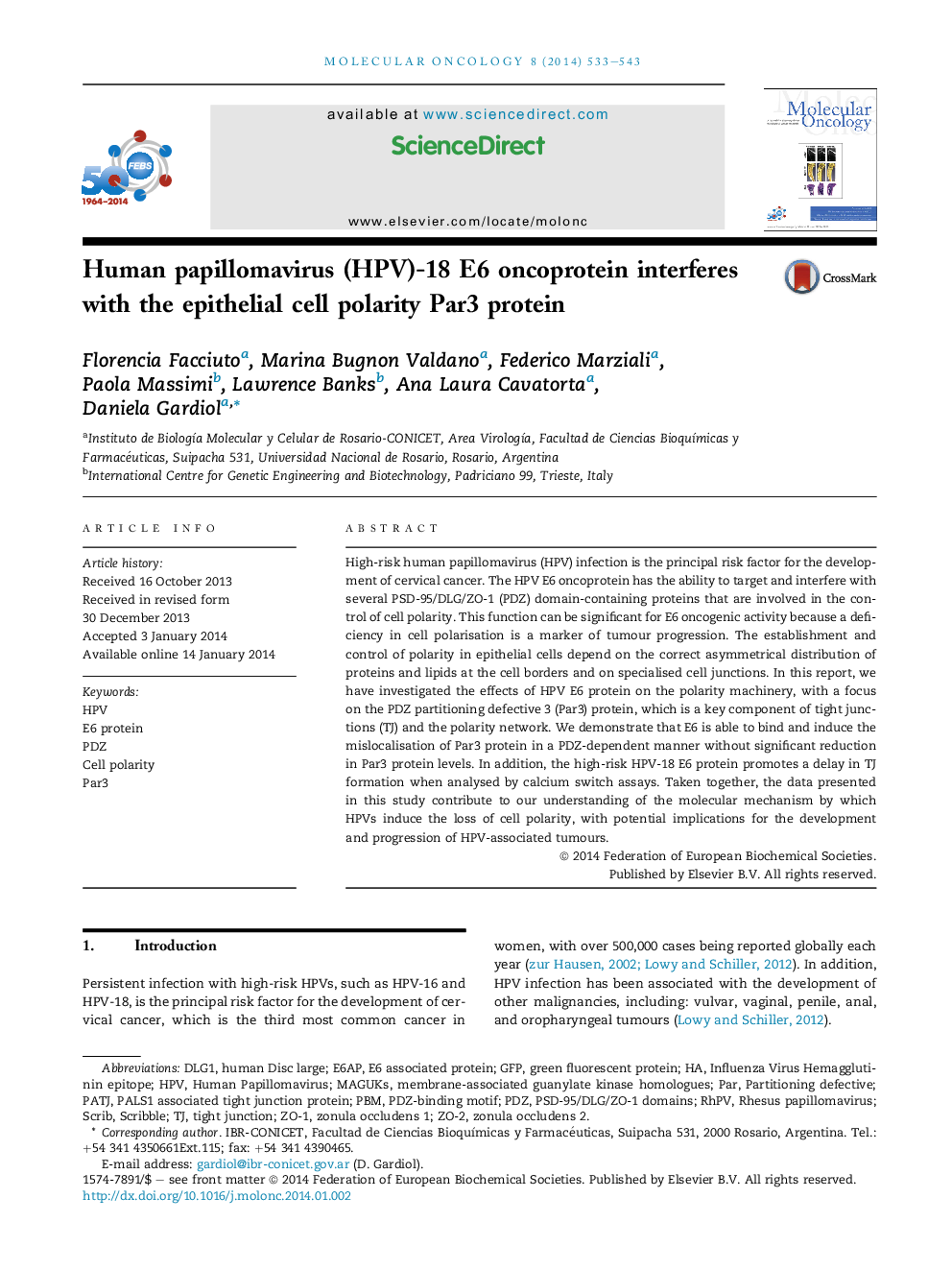| Article ID | Journal | Published Year | Pages | File Type |
|---|---|---|---|---|
| 10914675 | Molecular Oncology | 2014 | 11 Pages |
Abstract
High-risk human papillomavirus (HPV) infection is the principal risk factor for the development of cervical cancer. The HPV E6 oncoprotein has the ability to target and interfere with several PSD-95/DLG/ZO-1 (PDZ) domain-containing proteins that are involved in the control of cell polarity. This function can be significant for E6 oncogenic activity because a deficiency in cell polarisation is a marker of tumour progression. The establishment and control of polarity in epithelial cells depend on the correct asymmetrical distribution of proteins and lipids at the cell borders and on specialised cell junctions. In this report, we have investigated the effects of HPV E6 protein on the polarity machinery, with a focus on the PDZ partitioning defective 3 (Par3) protein, which is a key component of tight junctions (TJ) and the polarity network. We demonstrate that E6 is able to bind and induce the mislocalisation of Par3 protein in a PDZ-dependent manner without significant reduction in Par3 protein levels. In addition, the high-risk HPV-18 E6 protein promotes a delay in TJ formation when analysed by calcium switch assays. Taken together, the data presented in this study contribute to our understanding of the molecular mechanism by which HPVs induce the loss of cell polarity, with potential implications for the development and progression of HPV-associated tumours.
Keywords
Related Topics
Life Sciences
Biochemistry, Genetics and Molecular Biology
Cancer Research
Authors
Florencia Facciuto, Marina Bugnon Valdano, Federico Marziali, Paola Massimi, Lawrence Banks, Ana Laura Cavatorta, Daniela Gardiol,
